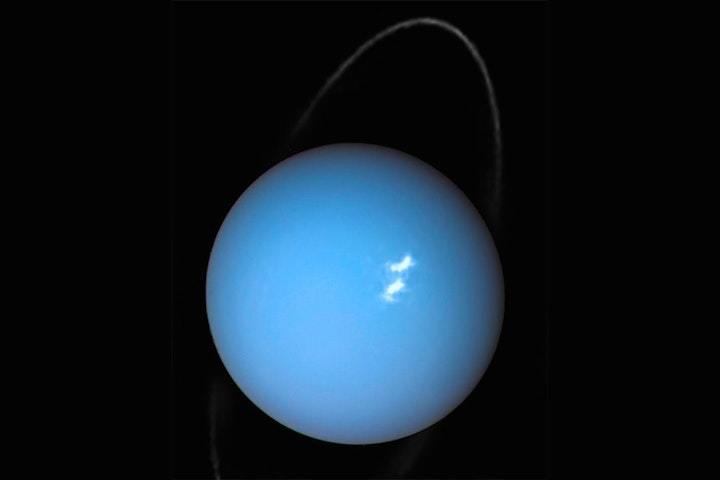Uranus has a "switch-like" magnetosphere that opens and closes due to the planet's complicated magnetic and rotational geometry. This is the conclusion of Xin Cao and Carol Paty from the Georgia Institute of Technology in the US, who have used data from Voyager 2 to model the icy planet’s unusual magnetic properties.
Most planets are surrounded by a magnetosphere – a plasma structure created by the planet's magnetic fields controlling the flow of cosmic charged particles. For Earth, the magnetic axis is almost aligned with the planet's spin axis, and the constant bombardment of electrically charged particles released by the Sun (known as solar winds) means the resulting magnetosphere has a bullet-like shape.
Realignment switch
Usually, this structure is in a "closed" state – charged particles in the solar wind are directed away from Earth. However, it can "open" because of magnetic reconnection – a phenomenon that happens within plasmas, like the solar wind, because they have their own set of magnetic fields. When the magnetic-field lines inside a plasma get close to other field lines, the entire pattern changes and everything realigns into a new configuration. The process converts the stored energy of the magnetic field into heat and kinetic energy, which sends particles out along the field lines. This is how solar flares are created.
Magnetic reconnection can happen in Earth's magnetosphere when the solar wind changes direction due to solar storms. The realignment can open up gaps in the protective magnetosphere, allowing highly energetic cosmic particles to enter the atmosphere. This is one mechanism that creates spectacular auroras and disrupts satellites.
Complex seventh planet
In contrast to Earth's relatively simple arrangement, Uranus has a particularly complex magnetic and rotational geometry that generates a dynamic magnetosphere. "Uranus is a geometric nightmare," says Paty. The ice giant has the most extreme axial tilt of all planets in the solar system, spinning on a near-horizontal axis. Furthermore, its magnetic axis is at a 59° angle to the spin axis and – adding insult to injury – does not go through the geometric centre of the planet.
Uranus is a geometric nightmare
Carol Paty, Georgia Institute of Technology
To study the effects of this unusual arrangement on Uranus’s magnetosphere, Cao and Paty created a simulation using data from the only spacecraft to fly by Uranus, NASA's Voyager 2. The mission sped past the planet over 30 years ago, collecting only five days worth of data. The researchers found that the lopsided magnetic field tumbles asymmetrically during the planet's 17.24 h full rotation – causing rapid rotational change in field strength and orientation. "When the magnetized solar wind meets this tumbling field in the right way, it can reconnect, and Uranus’s magnetosphere goes from open to closed to open on a daily basis," explains Paty. As well as this "switch-like" mechanism, Cao and Paty also suggest that solar-wind reconnection (as on Earth) occurs upstream of Uranus’s magnetosphere, in its twisted tail.
Again unlike Earth, magnetic reconnection on Uranus can cause auroras at a range of latitudes. However, these are difficult to observe because the planet is nearly two billion miles away – even the Hubble Space Telescope only gets a faint view on occasion. Therefore, Cao and Paty used their numerical models to predict favourable locations for reconnection.
Icy exoplanet clues
The pair say that learning more about Uranus will help with understanding the ever increasing number of exoplanets that astronomers are discovering. "The majority of exoplanets that have been discovered appear to also be ice giants in size," says Cao. "Perhaps what we see on Uranus and Neptune is the norm for planets: very unique magnetospheres and less-aligned magnetic fields. Understanding how these complex magnetospheres shield exoplanets from stellar radiation is of key importance for studying the habitability of these newly discovered worlds."
The study is presented in the Journal of Geophysical Research: Space Physics.
Quelle: physicsworld


